
The Majestic Tundavala Gap: Angola’s Natural Wonder
Discover the Tundavala Gap in Angola, where dramatic cliffs meet expansive plains, offering stunning views and a rich biodiversity perfect for nature lovers and adventurers.
Located near Lubango, the Tundavala Gap offers an awe-inspiring view of Angola's vast landscape. This natural wonder is perched on the edge of the Serra da Chela escarpment, standing at an impressive height of 2,200 meters above sea level. From the top, you can witness a dramatic drop of over 1,000 meters, providing a breathtaking panorama of the rugged cliffs and the sprawling plains below. The Tundavala Gap is not just about the view; it is a place rich in biodiversity. The area is home to a variety of flora and fauna, making it a haven for nature lovers and bird watchers. The cool mountain air and the serene environment make it a perfect spot for a peaceful retreat. The gap is also a popular destination for hiking enthusiasts, offering trails that range from easy walks to more challenging treks. Visiting the Tundavala Gap is an opportunity to connect with nature and experience the raw beauty of Angola. Whether you are there to take in the stunning views, explore the unique ecosystem, or simply enjoy a moment of tranquility, the Tundavala Gap promises an unforgettable experience.
Local tips in Tundavala Gap
- Visit early in the morning or late in the afternoon to avoid the midday heat and enjoy the best lighting for photographs.
- Wear comfortable hiking shoes as some trails can be rocky and uneven.
- Bring binoculars for bird watching and spotting other wildlife.
- Pack a picnic and plenty of water, as there are limited facilities in the area.
- Check the weather forecast before your visit, as the view can be obscured by fog on certain days.
The Majestic Tundavala Gap: Angola’s Natural Wonder
Located near Lubango, the Tundavala Gap offers an awe-inspiring view of Angola's vast landscape. This natural wonder is perched on the edge of the Serra da Chela escarpment, standing at an impressive height of 2,200 meters above sea level. From the top, you can witness a dramatic drop of over 1,000 meters, providing a breathtaking panorama of the rugged cliffs and the sprawling plains below. The Tundavala Gap is not just about the view; it is a place rich in biodiversity. The area is home to a variety of flora and fauna, making it a haven for nature lovers and bird watchers. The cool mountain air and the serene environment make it a perfect spot for a peaceful retreat. The gap is also a popular destination for hiking enthusiasts, offering trails that range from easy walks to more challenging treks. Visiting the Tundavala Gap is an opportunity to connect with nature and experience the raw beauty of Angola. Whether you are there to take in the stunning views, explore the unique ecosystem, or simply enjoy a moment of tranquility, the Tundavala Gap promises an unforgettable experience.
When is the best time to go to Tundavala Gap?
Iconic landmarks you can’t miss
Christ the King Statue
Explore the stunning Christ the King Statue in Lubango, a breathtaking landmark offering panoramic views and a deep connection to Angola's cultural heritage.
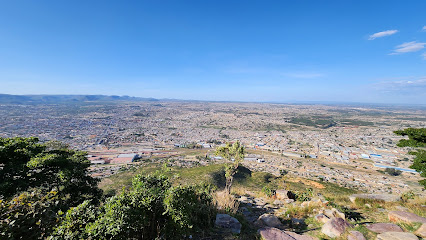
Our Lady Of Senhora De Monte Park
Experience the serene beauty and vibrant landscapes of Our Lady Of Senhora De Monte Park in Lubango, a perfect retreat for nature lovers and tourists.
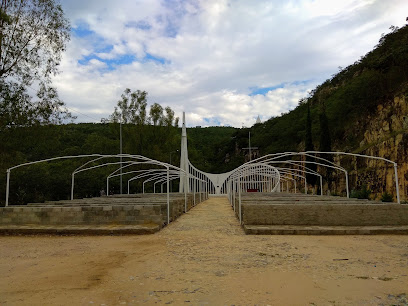
Estádio Da Tundavala
Explore Estádio Da Tundavala in Lubango: A stunning stadium offering thrilling local sports events and breathtaking views of Angola's landscapes.
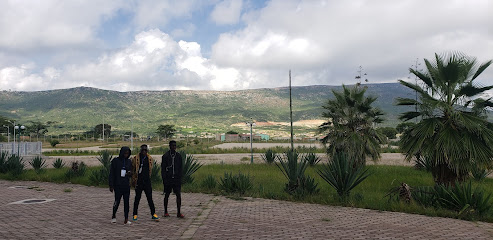
Restaurante Tundavala
Discover the flavors of Angola at Restaurante Tundavala in Lubango – a culinary gem offering local dishes and stunning views.

Tundavala
Explore Tundavala, a breathtaking escarpment in Angola offering stunning views and an unforgettable nature experience.
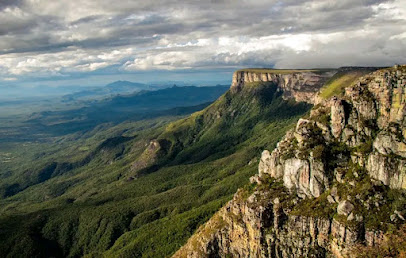
Cascata Secreta da Tundavala
Explore the serene beauty of Cascata Secreta da Tundavala, a hidden waterfall gem in Lubango, perfect for nature lovers and adventure seekers.
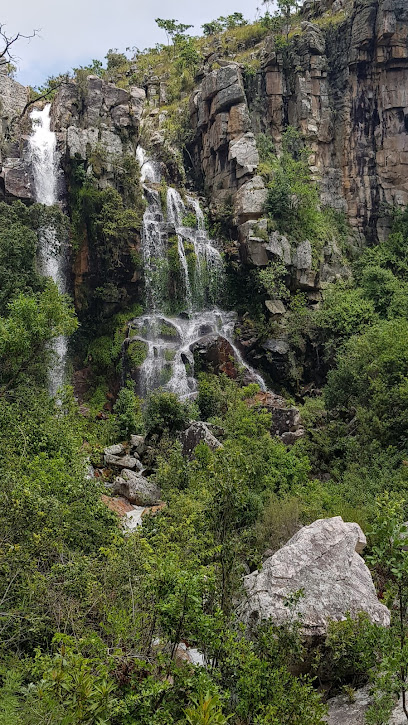
Tundavala (Birding hotspot)
Discover the breathtaking Tundavala, a birding hotspot in Angola, where vibrant birdlife meets stunning natural landscapes.
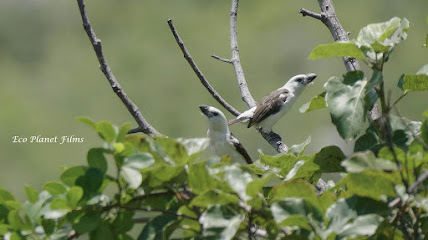
Estádio da tundavala
Experience the stunning views and cultural richness at Estádio da Tundavala in Lubango, a must-visit destination in Angola.

Unmissable attractions to see
Our Lady Of Senhora De Monte Park
Discover the tranquility and natural beauty of Our Lady Of Senhora De Monte Park in Lubango, a perfect escape for nature lovers and peace seekers.
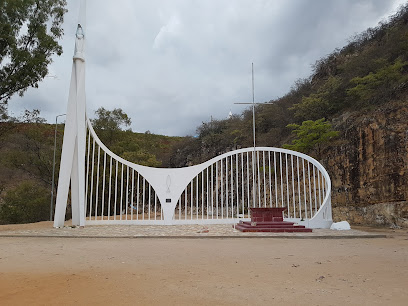
Tundavala
Explore Tundavala's breathtaking cliffs and panoramic views, a must-visit natural attraction in Angola that enchants every traveler.
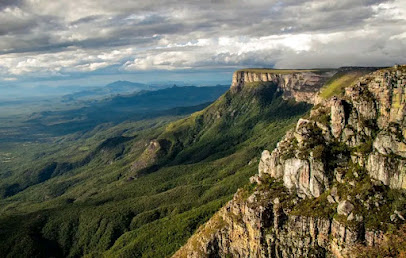
Mutipa
Experience the enchanting beauty and rich culture of Mutipa in Lubango, Angola—a hidden gem for adventurous travelers.

Marginal do Rio Mukufi
Explore the enchanting Marginal do Rio Mukufi in Lubango, a serene riverside attraction perfect for relaxation and cultural experiences.

Cascata Secreta da Tundavala
Experience the breathtaking beauty of Cascata Secreta da Tundavala, a hidden waterfall gem near Lubango, Angola, perfect for nature lovers and adventurers.
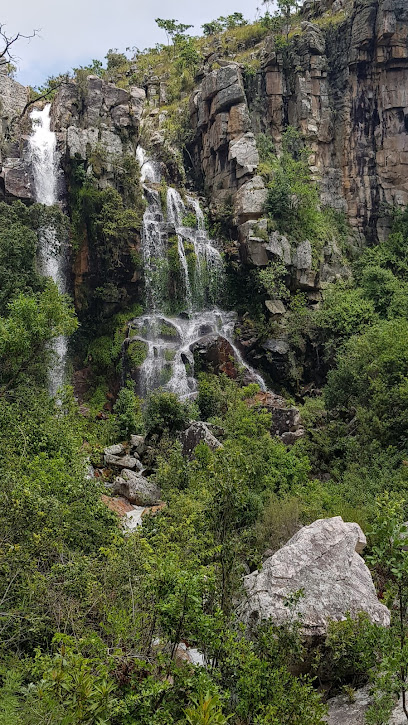
Tourada do Lubango
Immerse yourself in the vibrant cultural tradition of bullfighting at Tourada do Lubango, a unique Angolan experience in the heart of Lubango.
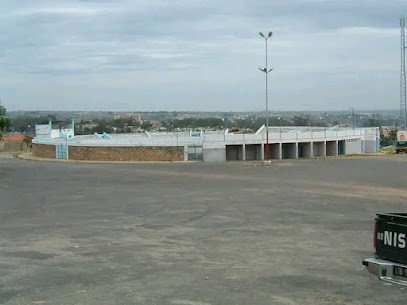
Cascata das Madres
Discover the stunning beauty of Cascata das Madres, an enchanting waterfall in Lubango, perfect for nature lovers and adventure seekers alike.
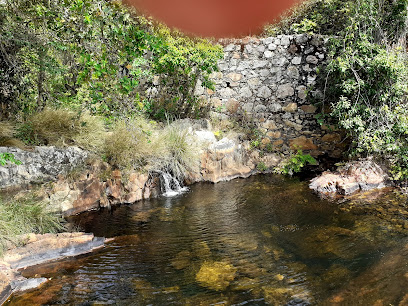
Tundavala (Birding hotspot)
Explore Tundavala, Angola's breathtaking birding hotspot, where vibrant wildlife and scenic landscapes await nature enthusiasts.
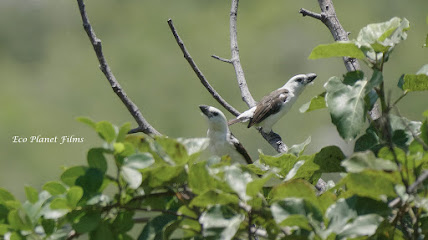
Serra da Humbia
Discover the breathtaking beauty of Serra da Humbia, a must-visit tourist attraction in Lubango, Angola, known for stunning landscapes and rich biodiversity.

MUTIPA
Explore Mutipa in Bibala: A captivating tourist attraction blending stunning landscapes and rich Angolan culture for an unforgettable experience.

Tundavala piscinas naturais
Discover the breathtaking Tundavala Natural Pools in Angola, an idyllic escape into nature filled with stunning landscapes and crystal-clear waters.
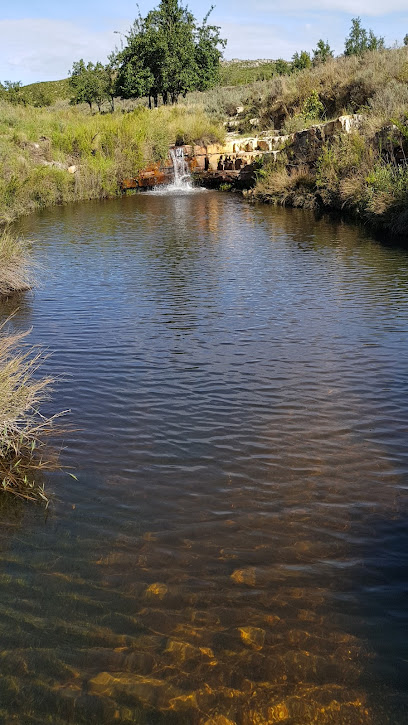
Lubango
Explore Lubango, Angola: a stunning blend of natural beauty, rich culture, and unforgettable experiences in the heart of Africa.
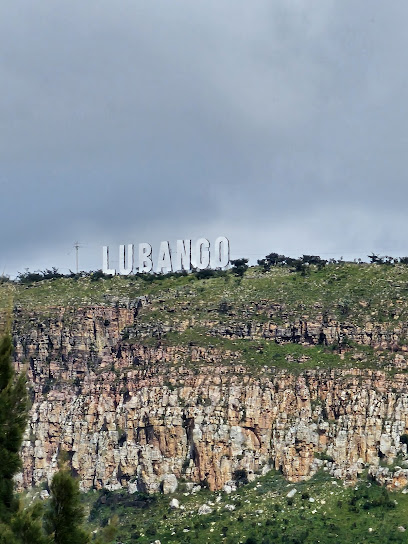
Essential places to dine
Restaurante la Vigia
Experience the authentic taste of Angola at Restaurante la Vigia—where fresh seafood meets traditional flavors in a cozy atmosphere.
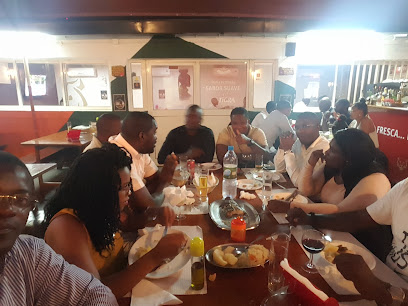
Pululukwa
Experience tranquility at Pululukwa Hotel in Lubango – your serene retreat amidst Angola's breathtaking landscapes.

Hotel Serra da Chela
Discover comfort and charm at Hotel Serra da Chela in Lubango, your perfect base for exploring Angola's stunning landscapes.
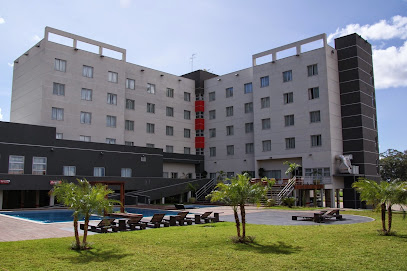
Tundavala Gap
Experience breathtaking views at Tundavala Gap, one of Angola's most stunning natural attractions near Lubango.
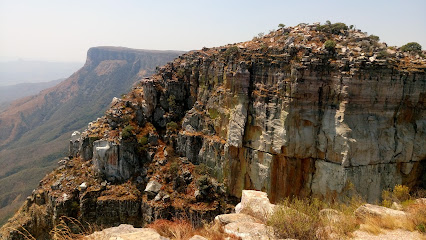
Restaurante Pimms
Experience exquisite dining at Restaurante Pimms in Luanda - where Angolan flavors meet international culinary artistry.
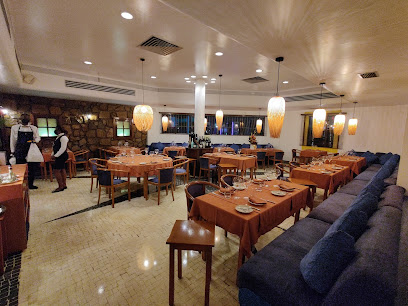
Christ the King Statue
Discover serenity at Lubango's Christ the King Statue - an awe-inspiring landmark symbolizing faith with stunning views.
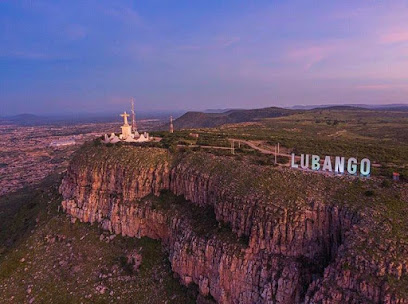
Kimbo do Soba
Experience comfort and culture at Kimbo do Soba in Lubango – your perfect indoor lodging choice for exploring Angola's beauty.
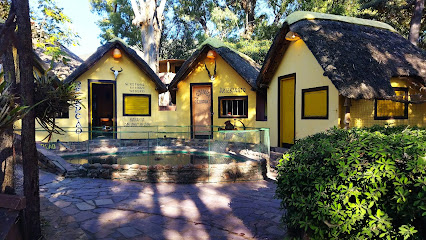
Le Chalet
Discover the charm of Le Chalet in Lubango – where delightful cheese selections meet cozy cafe vibes.
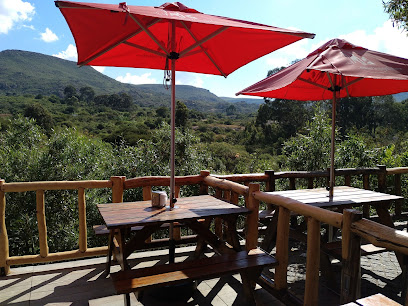
Medara Nuno Batata restaurante e gelo
Discover Medara Nuno Batata: A Culinary Gem in Lubango Offering Authentic Angolan Flavors and International Delights.
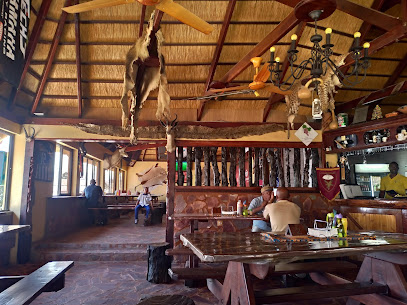
Restaurante Bico do Sapato
Discover authentic Angolan cuisine at Restaurante Bico do Sapato - a must-visit culinary destination in Luanda offering delightful flavors and warm hospitality.
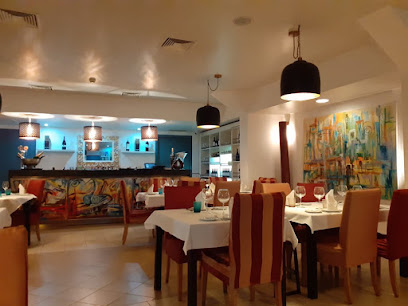
Nikki's House Restaurant
Experience the fusion of traditional Angolan cuisine and modern culinary artistry at Nikki's House Restaurant in Luanda.

Restaurante Lana
Discover authentic Angolan flavors at Restaurante Lana in Lubango – a culinary gem offering delicious local dishes and warm hospitality.
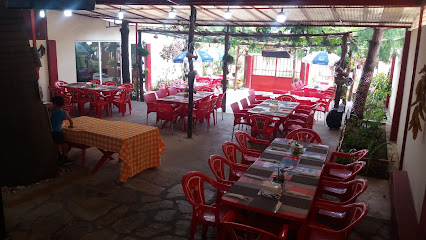
Suculenta Restaurante Fast Food
Discover authentic Angolan flavors at Suculenta Restaurante Fast Food in Lubango – a culinary delight awaits you!
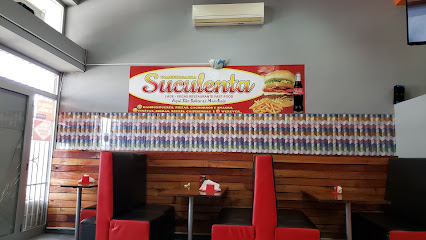
Restaurant - Rua 11
Discover authentic Angolan cuisine at Rua 11 in Benfica – a cozy restaurant serving delightful local flavors in a welcoming atmosphere.
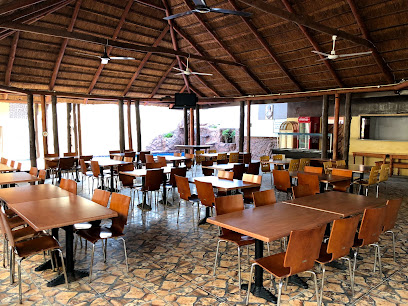
Estádio Da Tundavala
Discover Estádio Da Tundavala: A hub of sports excitement and cultural pride in Lubango, Angola.
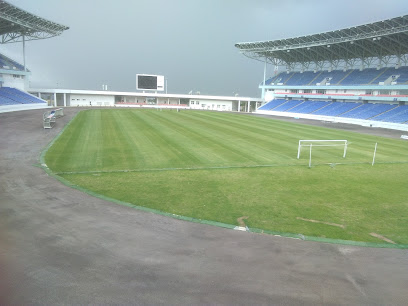
Markets, malls and hidden boutiques
Tundavala Gap
Discover the breathtaking views and unique landscapes of Tundavala Gap, a natural wonder in Angola that captivates every visitor.

Arco Iris Mini Marcado
Explore the vibrant Arco Iris Mini Mercado in Lubango for local flavors, unique crafts, and an authentic Angolan shopping experience.
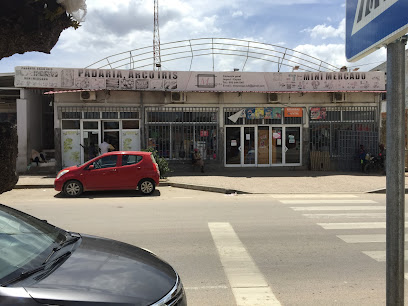
DAFLA COMERCIAL LDA
Discover the vibrant beauty scene at DAFLA COMERCIAL LDA in Lubango, featuring a wide range of products that reflect the local culture and enhance your travel experience.

PEP Angola Lubango Kero
Explore PEP Angola Lubango Kero for affordable fashion, offering diverse styles for men, women, and children in the heart of Lubango, Angola.

Equivalenza Lubango
Explore a world of captivating fragrances at Equivalenza Lubango, where elegance meets affordability in the heart of Angola.
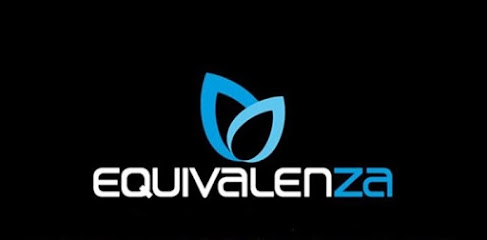
Kitanda Brechó
Explore Kitanda Brechó in Lubango for unique clothing that reflects the essence of Angolan culture and sustainable fashion.
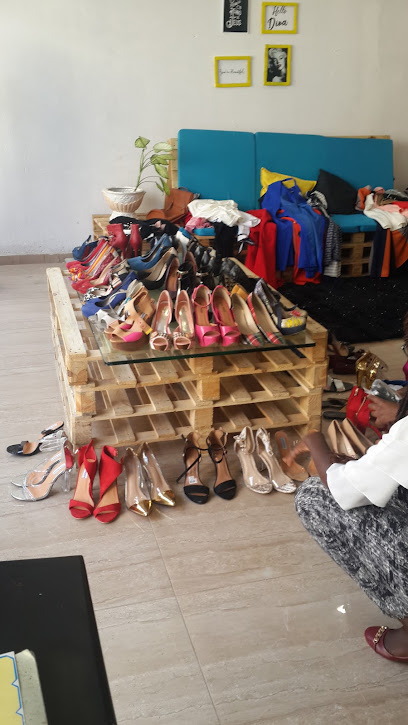
Mulug Moda Boutique
Explore Mulug Moda Boutique in Lubango for a unique selection of stylish clothing that reflects Angolan culture and modern trends.

Livraria Cantinho do Saber
Discover a literary oasis in Lubango, Livraria Cantinho do Saber offers a unique collection of books and a peaceful retreat for all book lovers.

CarolAngol LDA
Discover the charm of Lubango at CarolAngol LDA, your go-to store for unique Angolan crafts and souvenirs.
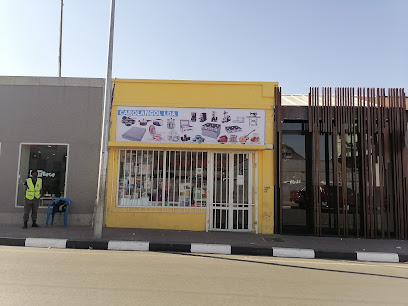
Mini Mercado DAMAD
Discover the flavors of Lubango at Mini Mercado DAMAD, where local products and fresh produce await you in a vibrant shopping atmosphere.
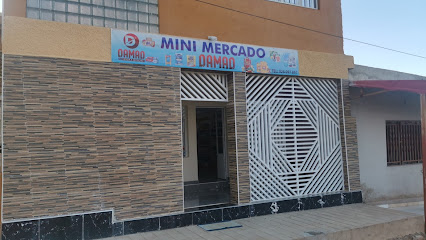
GIFTORG
Discover the latest electronics and gadgets at GIFTORG in Lubango, where quality meets innovation in a welcoming shopping environment.
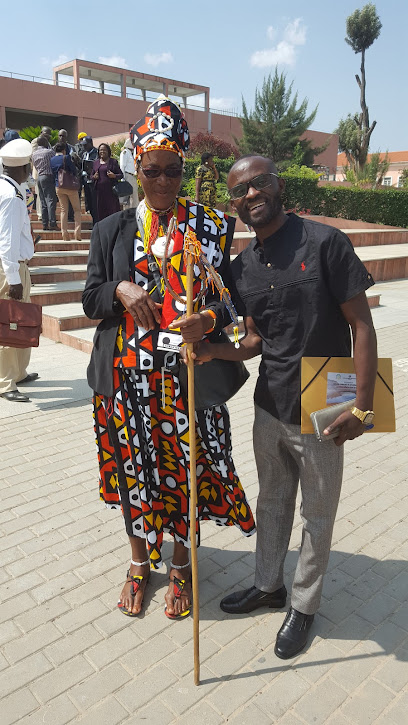
PEP Angola Lubango 3
Explore local fashion at PEP Angola Lubango, your go-to destination for stylish clothing for the whole family in Lubango.
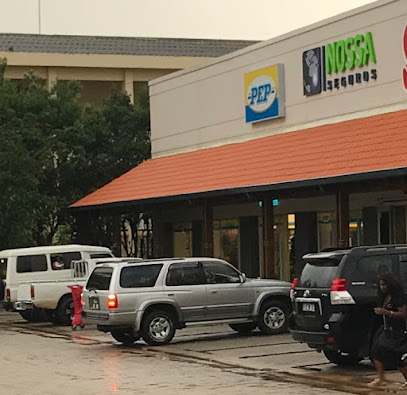
PEP Angola Lubango 1
Explore PEP Angola in Lubango for a stylish shopping experience with a variety of clothing for men, women, and children.

Bouteque e Perfumaria Muenho´s
Explore Bouteque e Perfumaria Muenho´s in Lubango, a boutique haven for unique fragrances and local craftsmanship that embodies Angolan culture.
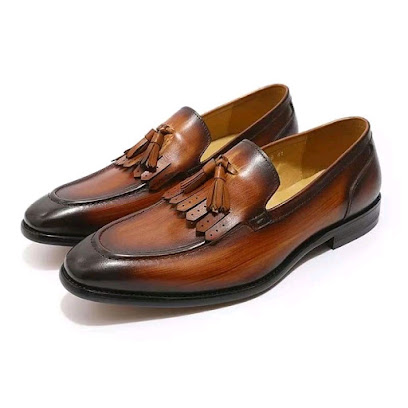
Boutique Cantinho da Moranguinha
Explore Boutique Cantinho da Moranguinha for unique, culturally-inspired clothing and accessories in Lubango, Angola.
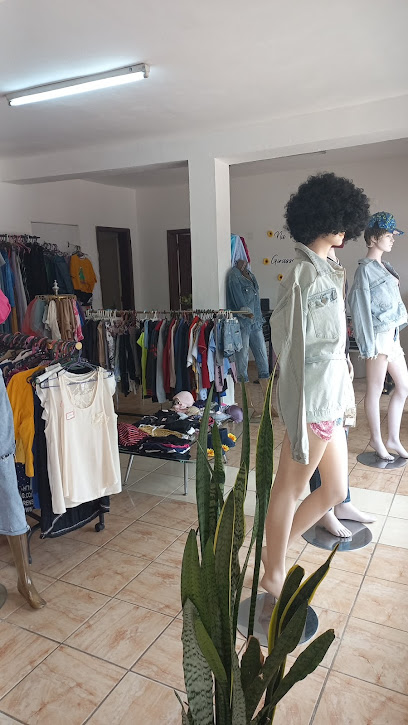
Essential bars & hidden hideouts
Kimbanda Bar
Experience the vibrant nightlife of Lubango at Kimbanda Bar, where delicious local cuisine meets a lively atmosphere for an unforgettable dining experience.
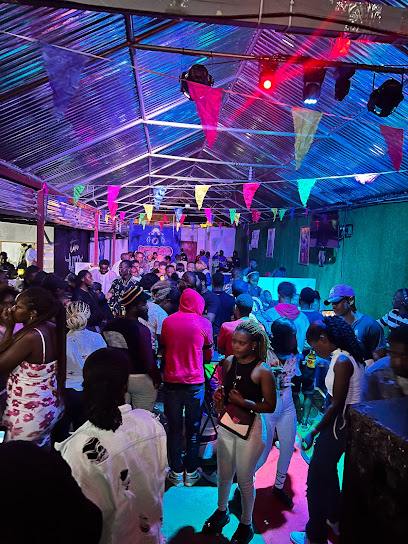
Marginal Bar
Discover the heart of Lubango's nightlife at Marginal Bar, a vibrant spot for drinks, socializing, and enjoying local culture.
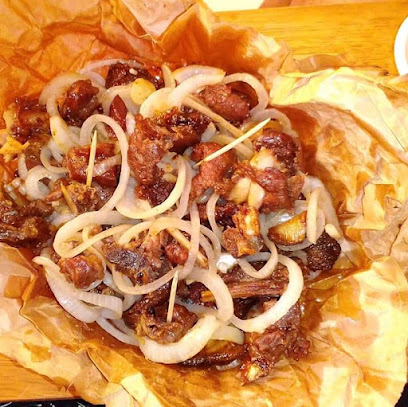
PUB OVIPALA VIVALI
Discover the lively nightlife of Lubango at Pub Ovipala Vivali, where local culture meets vibrant entertainment in a welcoming atmosphere.
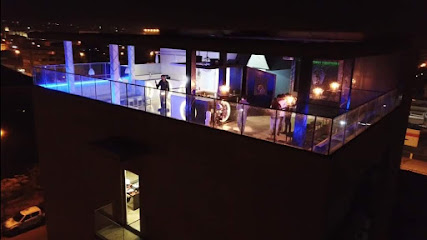
4M Bar
Discover the vibrant culinary scene of Lubango at 4M Bar, where local flavors meet a lively atmosphere for an unforgettable dining experience.
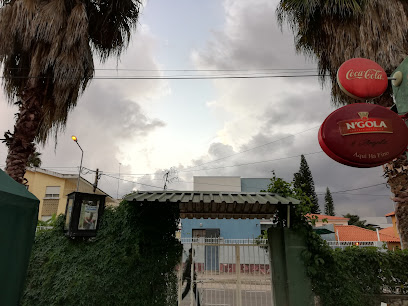
Kopus Bar
Experience the vibrant nightlife at Kopus Bar, Lubango's hottest disco club, where music, dance, and culture come alive.
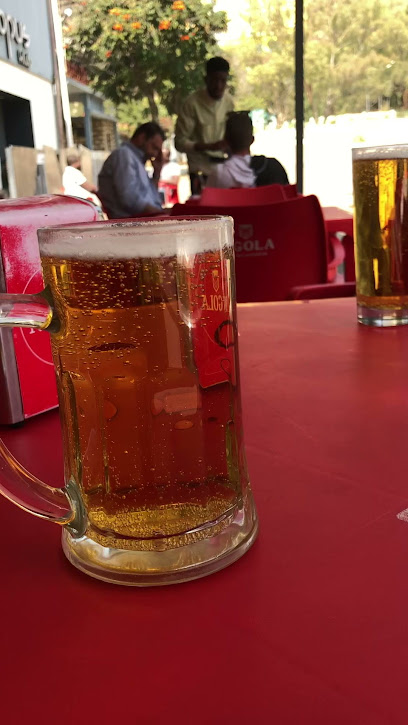
Vinte e três cafe bar
Experience the vibrant culture of Lubango at Vinte e Três Café Bar with its delightful beverages and welcoming atmosphere.

Ocean Anari Restaurante e Lounge Bar
Discover the delightful flavors of Lubango at Ocean Anari Restaurante e Lounge Bar, where local cuisine meets a vibrant atmosphere.

Bar o Cantinho do Kimbanda
Experience the vibrant nightlife of Lubango at Bar o Cantinho do Kimbanda, where local flavors and friendly faces create unforgettable moments.
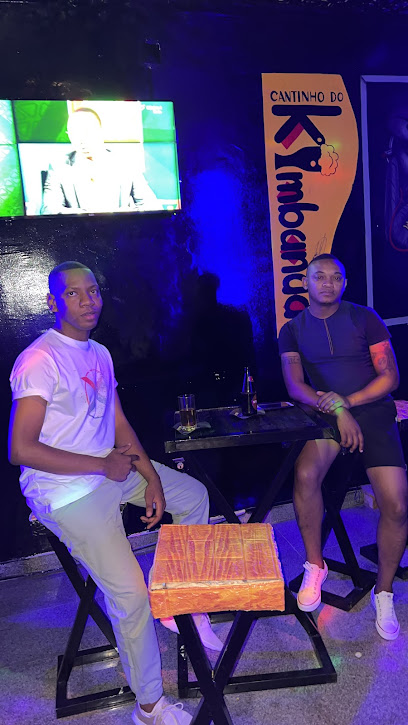
THE SPOT restaurante e bar
Experience the flavors of Angola at The Spot Restaurante e Bar, where local ingredients meet culinary creativity in a warm and inviting atmosphere.
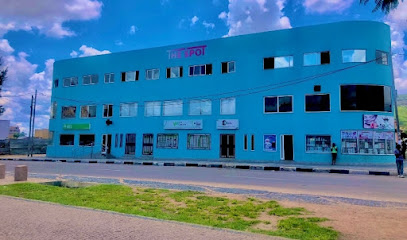
GAME IN - SPORT BAR
Experience the thrill of live sports and local flavors at GAME IN, Lubango's premier sports bar for fans and tourists alike.
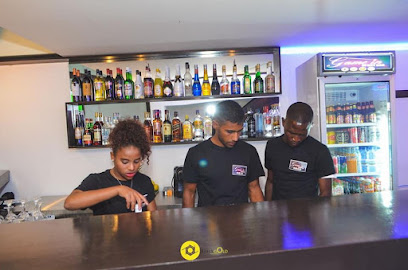
Jet 7 Armando’s Bar
Experience the vibrant atmosphere and local flavors at Jet 7 Armando’s Bar, a must-visit destination in Lubango, Angola.

Cantinho da Tia São
Discover the heart of Lubango at Cantinho da Tia São, where authentic Angolan cuisine meets vibrant local culture in a cozy bar setting.

Botequim Ijofati
Experience the vibrant nightlife of Lubango at Botequim Ijofati, where local culture meets refreshing drinks in a lively atmosphere.

Hospedaria e Snack Bar Payotas
Discover the vibrant atmosphere of Hospedaria e Snack Bar Payotas, where local flavors and warm hospitality create an unforgettable experience in Lubango.

Restaurantee Bar
Discover the vibrant nightlife at Restaurantee Bar in Lubango, where local drinks and lively music create unforgettable evenings.

Local Phrases about Tundavala Gap
-
- HelloOlá
[oh-lah] - GoodbyeAdeus
[ah-deh-oos] - YesSim
[seem] - NoNão
[nah-oh] - Please/You're welcomePor favor
[pohr fah-vohr] - Thank youObrigado/a
[oh-bree-gah-doh/ah] - Excuse me/SorryCom licença/Desculpe
[kohm lee-sen-sah/deh-skool-peh] - How are you?Como está?
[koh-moh ehs-tah] - Fine. And you?Bem. E você?
[behn. eh voh-seh] - Do you speak English?Fala inglês?
[fah-lah een-glehsh] - I don't understandNão entendo
[nah-oh ehn-tehn-doh]
- HelloOlá
-
- I'd like to see the menu, pleaseQueria ver o menu, por favor
[kay-ree-ah vehr oo meh-noo, poor fah-vohr] - I don't eat meatNão como carne
[nah-oh koh-moh kahr-neh] - Cheers!Saúde!
[sow-deh] - I would like to pay, pleaseGostaria de pagar, por favor
[goh-stah-ree-ah deh pah-gahr, poor fah-vohr]
- I'd like to see the menu, pleaseQueria ver o menu, por favor
-
- Help!Ajuda!
[ah-joo-dah] - Go away!Vai embora!
[vah-ee ehm-boh-rah] - Call the Police!Chame a Polícia!
[shah-meh ah poh-lee-see-ah] - Call a doctor!Chame um médico!
[shah-meh oom meh-dee-koo] - I'm lostEstou perdido/a
[eh-stoh pehr-dee-doo/ah] - I'm illEstou doente
[eh-stoh doo-ehn-teh]
- Help!Ajuda!
-
- I'd like to buy...Queria comprar...
[kay-ree-ah kohm-prahr...] - I'm just lookingEstou só a olhar
[eh-stoh soh ah oh-lahr] - How much is it?Quanto custa?
[kwahn-too koos-tah] - That's too expensiveIsso é muito caro
[ee-soh eh moo-ee-toh kah-roo] - Can you lower the price?Pode baixar o preço?
[poh-deh bai-shahr oo preh-soo]
- I'd like to buy...Queria comprar...
-
- What time is it?Que horas são?
[keh oh-rahz sah-oh] - It's one o'clockÉ uma hora
[eh oom-ah oh-rah] - Half past (10)Meia hora (10)
[may-ah oh-rah (deez)] - MorningManhã
[mah-nyah] - AfternoonTarde
[tahr-deh] - EveningNoite
[noy-teh] - YesterdayOntem
[ohn-tehm] - TodayHoje
[oh-zheh] - TomorrowAmanhã
[ah-mah-nyah] - 1Um
[oom] - 2Dois
[doh-ees] - 3Três
[trehs] - 4Quatro
[kwah-troh] - 5Cinco
[seen-koh] - 6Seis
[say-eesh] - 7Sete
[seh-teh] - 8Oito
[oy-toh] - 9Nove
[noh-veh] - 10Dez
[dehz]
- What time is it?Que horas são?
-
- Where's a/the...?Onde está o/a...?
[ohn-deh ehs-tah oo/ah...?] - What's the address?Qual é o endereço?
[kwahl eh oo ehn-deh-reh-soh?] - Can you show me (on the map)?Pode mostrar-me (no mapa)?
[poh-deh mohs-trahr-meh (noo mah-pah)?] - When's the next (bus)?Quando é o próximo (autocarro)?
[kwahn-doh eh oo proh-kshee-moh (ow-toh-kah-roo)?] - A ticket (to ....)Um bilhete (para ....)
[oom bee-lyeh-teh (pah-rah ....)]
- Where's a/the...?Onde está o/a...?
History of Tundavala Gap
-
The Tundavala Gap, located in the Huila Province of Angola, is a natural wonder formed by the ancient geological processes that shaped the region's landscape. The gap is a result of tectonic activities and erosion that carved out the dramatic escarpment. The breathtaking cliffs, rising to over 2,200 meters above sea level, offer a panoramic view of the sprawling plains below.
-
Before the arrival of European explorers, the Tundavala Gap area was inhabited by indigenous groups such as the Ovimbundu people. These communities thrived in the region, developing a rich culture and traditions closely tied to the land. The escarpment provided a natural fortress and lookout point, which was utilized for both defense and surveillance.
-
During the late 19th and early 20th centuries, Portuguese explorers and colonists ventured into the interior of Angola, including the Tundavala Gap. The strategic location of the gap made it an important point of interest for mapping and establishing colonial control. The Portuguese influence left an indelible mark on the region, as evidenced by the architectural remnants and cultural imprints still visible today.
-
The Tundavala Gap played a significant role during the Angolan War of Independence (1961-1975). The rugged terrain and high vantage points provided strategic advantages for guerrilla fighters. The gap served as a hideout and observation post for the MPLA (Popular Movement for the Liberation of Angola) fighters who were battling against Portuguese colonial forces. The area's natural defenses made it a critical location during the conflict.
-
Following Angola's independence in 1975, the Tundavala Gap saw continued conflict during the Angolan Civil War (1975-2002). The region's strategic importance persisted, and it witnessed numerous skirmishes between the MPLA government forces and UNITA (National Union for the Total Independence of Angola) rebels. The gap's rugged landscape provided cover and strategic positions for both sides.
-
In the post-war period, the Tundavala Gap has emerged as a symbol of natural beauty and resilience. The Angolan government and local communities have worked to promote the gap as a major tourist destination. Visitors from around the world come to marvel at the breathtaking vistas, hike the challenging trails, and learn about the rich history and culture of the region. The Tundavala Gap stands as a testament to Angola's natural wonders and the enduring spirit of its people.
Tundavala Gap Essentials
-
Tundavala Gap is located in the Huila Province of Angola, near the city of Lubango. The nearest airport is Lubango Mukanka Airport, which receives domestic flights primarily from Luanda. From Luanda, you can take a direct flight to Lubango, which typically takes around 2 hours. Once in Lubango, the Tundavala Gap is about a 15 km drive west of the city center. You can hire a taxi or rent a car to reach the site.
-
Getting around Lubango and to Tundavala Gap is relatively straightforward. Taxis are widely available and can be hired for a negotiated fare. Car rentals are also an option and provide the flexibility to explore the surrounding areas at your own pace. Public buses and minibuses (candongueiros) operate within Lubango, but they can be crowded and schedules are not always reliable.
-
The official currency in Angola is the Angolan Kwanza (AOA). Credit cards are accepted in some hotels, restaurants, and larger shops in Lubango, but it is advisable to carry cash, especially when traveling to more remote areas like Tundavala Gap. ATMs are available in Lubango, but it's wise to withdraw sufficient cash before heading out to ensure you have enough funds for your trip.
-
Lubango and the Tundavala Gap area are generally safe for tourists, but standard precautions should be taken. Avoid walking alone at night and keep your valuables secure. While the area around Tundavala Gap is relatively safe, be cautious of your surroundings and avoid isolated areas. There are no specific high-crime areas targeting tourists, but staying vigilant and aware of your surroundings is always a good practice.
-
In case of an emergency, dial 113 for police assistance or 112 for medical emergencies. Lubango has a main hospital and several clinics where you can seek medical help if needed. It is highly recommended to have travel insurance that covers medical emergencies. For minor health issues, there are pharmacies in Lubango where you can purchase over-the-counter medications.
-
Fashion: Do dress modestly, especially in rural areas. Avoid wearing overly revealing clothing. Religion: Do respect local customs and traditions. If visiting religious sites, dress conservatively and behave respectfully. Public Transport: Do be courteous and give up your seat to elderly passengers. Don't eat or drink on public transport. Greetings: Do greet people with a handshake. A friendly smile is also appreciated. Eating & Drinking: Do try local foods and accept food offerings graciously. Don't refuse hospitality, as it is considered impolite.
-
To experience Tundavala Gap like a local, visit the site early in the morning to witness the breathtaking sunrise and avoid the midday heat. Engage with locals and ask them about the best viewpoints and hidden spots around the gap. Don’t miss the opportunity to taste local dishes at nearby eateries in Lubango, such as 'muamba de galinha' (chicken stew) and 'funge' (a type of porridge). Consider hiring a local guide who can provide deeper insights into the history and legends associated with Tundavala Gap.
Nearby Cities to Tundavala Gap
-
Things To Do in Ongwediva
-
Things To Do in Etosha Village
-
Things To Do in Outjo
-
Things To Do in Luanda
-
Things To Do in Tsumeb
-
Things To Do in Otjiwarongo
-
Things To Do in Rundu
-
Things To Do in Omaruru
-
Things To Do in Usakos
-
Things To Do in Karibib
-
Things To Do in Okahandja
-
Things To Do in Uíge
-
Things To Do in Swakopmund
-
Things To Do in Walvis Bay
-
Things To Do in Windhoek







